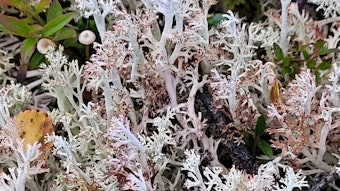
This article investigates the ability of Zemea* (INCI: Propanediol) to boost preservative efficacy in an aqueous personal care formulation. This 100% bio-based propanediol is a colorless, pure glycol alternative derived from a sustainable, renewable corn fermentation process. The testing was conducted using standardized microbiology guidelines, known as preservative efficacy testing or challenge tests.
Background
In previous testing, the bactericidal and fungicidal properties of propanediol were evaluated using the Cosmetic, Toiletry, and Fragrance Association (CTFA) Microbiology Guidelines. Neat samples of propanediol (Zemea), propylene glycol (PG) and butylene glycol (BG) were tested, as well as three o/w emulsions using a combination of propanediol, PG, and BG and three different preservative systems. The preservative systems included phenoxyethanol (and) methylparaben (and) propylparaben (and) ethylparaben; caprylyl glycol (and) phenoxyethanol (and) ethylhexylglycerin; and cetearyl alcohol (and) dimethicone (and) caprylyl glycol. The test results concluded that the bactericidal and fungicidal performance for Zemea was comparable to PG and better than BG, both as neat solutions and as an ingredient in the o/w emulsion.
Market feedback suggests that propanediol boosts preservative efficacy when used in personal care formulations and further testing was conducted. The results of the additional testing is the focus of this article.
Experimental Design
Formulation: A generic o/w skin care emulsion formula, shown in Formula 1, was chosen as the base material and prepared by Cosmetech Laboratories Inc. The formula was prepared to minimize performance impact and allow measurement of preservative boosting effectiveness.
Preservatives: The preservatives listed in Table 1 were chosen to represent combinations commonly used for their effectiveness to protect products. The four phenoxyethanol-based and three natural-based systems were tested at 50% of their recommended use level and evaluated in four separate emulsions with 0.0, 2.0, 4.0 and 6.0% w/w Zemea to determine the minimum amount of Zemea needed to boost the preservative efficacy.
Test methods and organisms: The challenge testing was conducted by Clinical Research Laboratories. The methods employed were CTFA Microbiology Guidelines, Section 20, M-3, A Method for Preservation Testing of Water Miscible Personal Care Products and USP 33, Section 61, Neutralization/Removal of Antimicrobial Activity. Using the organisms listed in Table 2, the formulations were inoculated with approximately 1x106 bacteria per gram of product, 1x105 yeast cells per gram of product, or 1x105 mold spores per gram of product:
Acceptance Criteria: For this type of formulation, the preservative is effective in the sample examined if the concentrations of viable bacteria demonstrate no less than a 3.0 log reduction (99.9%) from the initial count at seven days and no increase for the duration of the test period, and if the concentration of viable yeast and molds demonstrate no less than a 1.0 log reduction (90.0%) from the initial count at seven days and no increase for the duration of the test period.
Results
The minimum percentage of Zemea needed to boost preservative efficacy at 50% of their recommended use level is shown in Figure 1. These percentages are based on the concentrations of viable bacteria and yeasts reduced to <1.00 CFU/g at day 7, and concentrations of viable molds with a 1 Log reduction at day 7.
Conclusion
The propanediol tested (Zemea) worked well with the phenoxyethanol-based preservatives and boosted the preservative efficacy for Gram-positive, Gram-negative and yeast organisms. Zemea boosted the efficacy of each preservative tested with Aspergillus niger.
Also, the propanediol worked well with the natural based preservatives and boosted the preservative efficacy for yeast and molds. Zemea may allow the use of less preservatives in formulations while providing additional performance benefits such as no skin irritation, increased humectancy and excellent aesthetics. Zemea is not a preservative nor is it considered an active ingredient.
*Zemea is a registered trademark of DuPont Tate & Lyle Bio Products LLC.
Disclaimer:
The above paid-for content was produced by and posted on behalf of the Sponsor. Content provided is generated solely by the Sponsor or its affiliates, and it is the Sponsor’s responsibility for the accuracy, completeness and validity of all information included. Cosmetics & Toiletries takes steps to ensure that you will not confuse sponsored content with content produced by Cosmetics & Toiletries and governed by its editorial policy.










